Research Articles by Michael Dias

The Art of Teaching Science emphasizes a humanistic, experiential, and constructivist approach to... more The Art of Teaching Science emphasizes a humanistic, experiential, and constructivist approach to teaching and learning, and integrates a wide variety of pedagogical tools. Becoming a science teacher is a creative process, and this innovative textbook encourages students to construct ideas about science teaching through their interactions with peers, mentors, and instructors, and through hands-on, minds-on activities designed to foster a collaborative, thoughtful learning environment. This second edition retains key features such as inquiry-based activities and case studies throughout, while simultaneously adding new material on the impact of standardized testing on inquiry-based science, and explicit links to science teaching standards.Also included are expanded resources like a comprehensive website, a streamlined format and updated content, making the experiential tools in the book even more useful for both pre-and in-service science teachers.

Secondary science methods students' thinking on coteaching practice was studied for the developme... more Secondary science methods students' thinking on coteaching practice was studied for the development of conscious elements of practical teacher knowledge supporting the use of structured inquiry. Reflective dialogue on practice in an electronic forum was analyzed for elements of formal learning and biography (past and present) that informed thinking on practice. Changes in thinking over time were considered in light of observed practice, including methods students' thinking about inquiry through use of STC curriculum. Three concepts related to experience in learning to teach in this model emerged from the data: (a) movement from cultural acclimation to reflection on inquiry practice, (b) thinking through past educational knowledge and experience, and (c) integrating knowledge and experience in practice. Discussion highlights the integration of formal knowledge, biography, and peripheral participation with development of “knowledge of students'' in learning to teach in this model. Implications for preservice teacher education highlight the important aspects of learning to teach in practice in order to begin developing practical teacher knowledge for teaching using structured inquiry
A science teacher educator returned to teaching adolescents after more than 10 years in the profe... more A science teacher educator returned to teaching adolescents after more than 10 years in the professoriate. We studied his beliefs, practice and daily use of inquiry pedagogy while implementing a reform-based curriculum. Reflection on practice was evidenced by a weekly journal, classroom observations and debriefings, and extensive interviews. Newly developed practical knowledge from this experience shifted the science teacher educator’s beliefs away from the Piagetian structuralism espoused in prescribed curricula towards a more culturally responsive, student-driven approach to teaching science to middle grades students. The merits and limitations of curricula attempting to follow traditional scientific practices are discussed.

The first author re-entered the middle grades classroom to teach a new National Science Foundatio... more The first author re-entered the middle grades classroom to teach a new National Science Foundation (NSF) physical science curriculum that was designed to foster conceptual change through a scientific approach. The curriculum design met the need and call for reform in science education through its focus on inquiry, evidence-based reasoning, peer collaboration, and deeper understanding of important concepts in a science discipline. Lessons followed a learning cycle of activities for knowledge construction. As a self-study, the first author as teacher sought to learn about his beliefs and abilities in practice while enacting and adjusting the curriculum design. The second author helped in this reflective practice through visiting the first author’s classroom for periodic observations, interviews, and discussions about the implementation of this curriculum. Four videotaped lessons and instructional artifacts demonstrate that the teacher enacted the curriculum with high fidelity to its prescribed inquiries and learning cycle format with only minor changes. Instructional design modifications were made in practice to assist lower achieving students meet its high academic challenge of analytical thinking. The merits of the prescribed curriculum for promoting deductive scientific thinking are detailed alongside instructional design decisions emanating from the curriculums’ academic rigor and limitations in connecting to adolescent interest and choice. This case details one example of a teacher who intended to faithfully implement a reform-based science curriculum, realizing along the way, that design changes were warranted to meet the educative and emotional needs of students in a particular context.
Book Reviews by Michael Dias
In this chapter we provide an introductory overview of the chapters on youth activism, relating t... more In this chapter we provide an introductory overview of the chapters on youth activism, relating these writings to past and current waves of science education reform. We argue that socioscientific issues offer culturally relevant opportunities for helping adolescents develop the knowledge of science needed for personal decision-making, civic engagement, and activism.
Books by Michael Dias
The Art of Teaching Science emphasizes a humanistic, experiential, and constructivist approach to... more The Art of Teaching Science emphasizes a humanistic, experiential, and constructivist approach to teaching and learning, and integrates a wide variety of pedagogical tools. Becoming a science teacher is a creative process, and this innovative textbook encourages students to construct ideas about science teaching through their interactions with peers, mentors, and instructors, and through hands-on, minds-on activities designed to foster a collaborative, thoughtful learning environment.
Papers by Michael Dias
Journal of Applied Instructional Design, 2021
This study examined how seven math and science secondary teachers addressed social justice teachi... more This study examined how seven math and science secondary teachers addressed social justice teaching during the COVID-19 pandemic and how their instructional practices mapped onto their pedagogical intentions. Guided by trauma-informed teaching practices and learner engagement conceptual frameworks, the authors argue STEM induction teachers need greater support to design instruction that enables students to apply knowledge to social justice issues. Participants' understanding and enactment of social justice pedagogy varied, leading the authors to provide continued support to the cohort of teachers for their students to feel empowered to address, discuss, and apply the discipline knowledge in STEM to social justice issues.
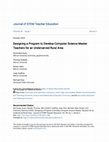
Journal of STEM Teacher Education
Due to a shortage of rural computer science teachers, researchers used a three-phase method to de... more Due to a shortage of rural computer science teachers, researchers used a three-phase method to design a computer science endorsement, which will be coupled with an instructional coaching endorsement within an Educational Specialist degree program. The team conducted interviews of teachers as well as school and district level administrators in rural areas to determine needs and resources available to develop computer science master teachers. Interviewers also investigated recruitment, preparation and support processes pertinent to the program. Findings included that, although infrastructure for wireless access is lacking, school and district administrators are very interested in supporting teachers to become computer science master teachers. STEM teachers are especially interested in computer science content related to their teaching field. Partners indicated an interest in developing teacher leaders, in order to encourage a sustainable computer science program in the school and district. Information gathered was used to design a program that intends to meet the needs of potential rural computer science master teachers.
Journal of Science Teacher Education

Science teacher educators prepare and provide professional development for teachers at all grade ... more Science teacher educators prepare and provide professional development for teachers at all grade levels. They seek to improve conditions in classroom teaching and learning, professional development, and teacher recruitment and retention. Science Teacher Educators as K-12 Teachers: Practicing What We Teach tells the story of sixteen teacher educators who stepped away from their traditional role and entered the classroom to teach children and adolescents in public schools and informal settings. It details the practical and theoretical insights that these members of the Association of Science Teacher Educators (ASTE) earned from experiences ranging from periodic guest teaching to full-time engagement in the teaching role. Science Teacher Educators as K-12 Teachers shows science teacher educators as professionals engaged in reflective analysis of their beliefs about and experiences with teaching children or adolescents science. With their ideas about instruction and learning challenged,...

In recent years, teacher education programs have emphasized the importance of developing teachers... more In recent years, teacher education programs have emphasized the importance of developing teachers’ understanding of social justice teaching (SJT). As teacher educators, we believe teaching STEM for social justice involves helping students identify inequities within their communities and determine how STEM knowledge can be used to understand and respond to community issues around social injustice (Berry et al., 2009). While many STEM teachers have theoretical knowledge of social justice for teaching, they are often challenged to facilitate social justice lessons in their classrooms (Solomon & Allen, 2001). For many induction-phase STEM teachers, the implementation of social justice lessons is new and they often experience trepidation over how an activity or lesson will play out in a classroom setting (Berry et al., 2020). As such, we developed and delivered a free five-week online professional development (PD) to support middle and high school induction-phase STEM teachers to success...

Reflective Practice, 2020
ABSTRACT In this conceptual paper, we present a professional practice-oriented Multidimensional M... more ABSTRACT In this conceptual paper, we present a professional practice-oriented Multidimensional Model of Reflective Practice (MMRP) and a Critical Incident Reflection (CIR) protocol as worthwhile tools for supporting teacher candidates (TCs) to become more self-directed, multi-faceted, and holistic in their reflective practice. The model presents reflection as a complex endeavor situated in a dynamic milieu. It emphasizes the complementary nature of professional competencies of knowledge, skills, and disposition, and the interrogation of an incident through technical, contextual, and critical reflection as well as reflection-in, -on, and -for-action. The CIR protocol provides scaffolding support for TCs as they move toward becoming independent reflective practitioners. Together, the MMRP and CIR protocol facilitate multidimensional reflection. We present a case for providing a more deliberate support for reflection. In doing this, we define reflection, highlight its common frameworks, and discuss the significance of intentional and systematic reflection on professional competencies. In the conclusion, we bring these ideas together to discuss the implications for a self-directed and agentic approach to reflection and professional growth.

International Journal of Designs for Learning, 2016
The first author re-entered the middle grades classroom to teach a new National Science Foundatio... more The first author re-entered the middle grades classroom to teach a new National Science Foundation (NSF) physical science curriculum that was designed to foster conceptual change through a scientific approach. The curriculum design met the need and call for reform in science education through its focus on inquiry, evidence-based reasoning, peer collaboration, and deeper understanding of important concepts in a science discipline. Lessons followed a learning cycle of activities for knowledge construction. As a self-study, the first author as teacher sought to learn about his beliefs and abilities in practice while enacting and adjusting the curriculum design. The second author helped in this reflective practice through visiting the first author’s classroom for periodic observations, interviews, and discussions about the implementation of this curriculum. Four videotaped lessons and instructional artifacts demonstrate that the teacher enacted the curriculum with high fidelity to its p...
The Art of Teaching Science, 2013

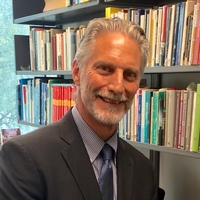
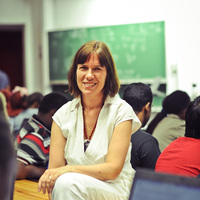



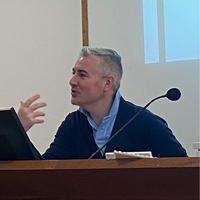


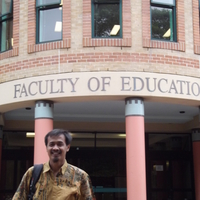

Uploads
Research Articles by Michael Dias
Book Reviews by Michael Dias
Books by Michael Dias
Papers by Michael Dias